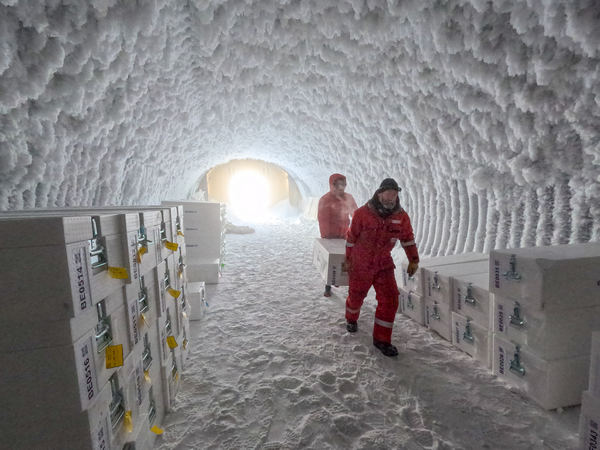
It is possible to reconstruct our planet’s climate and environmental history “simply” by drilling into the Antarctic ice sheet. This is proved by the important result achieved by an international research group that in almost seven weeks of work, between November 2022 and January 2023, reached a depth of over 808 metres and extracted an ice core containing information about the climate and atmosphere of the last 49,300 years.
This important milestone marked the end of the second drilling campaign of the Beyond Epica – Oldest Ice project funded by the European Commission with 11 million euros and coordinated by Carlo Barbante, Director of the National Research Council’s Institute of Polar Sciences (ISP-CNR) and Professor at the Ca’ Foscari University of Venice.
The ultimate goal of the seven-year project, which started in 2019, is to reach a depth of about 2700 metres, representing the thickness of the ice sheet underneath the Little Dome C site. This is a remote area in the white continent, 35 km away from the Italian-French Concordia Station, which is located 3,220 metres above sea level, one of the most extreme places on Earth with strong gusts of wind and a temperature almost always below -40°C.
Immediately after reaching the site, the team started to install the complex ice drilling system and operations began. Faced with unforeseen technical problems and delays also due to bad weather conditions, the research group worked hard to achieve the important result. The first 217 metres of the extracted ice core were processed by a support team at Concordia Station.
“We believe that this ice core can give us information about past climate and greenhouse gases in the atmosphere during the Mid-Pleistocene Transition (MPT) which happened between 900 thousand and 1.2 million years ago,” explained Barbante. “During this transition, climate periodicity between ice ages changed from 41,000 to 100,000 years. The reason why this happened is the mystery we hope to solve.”
Beyond EPICA – Oldest Ice brings together twelve research centres from ten countries. In addition to CNR and the Ca’ Foscari University of Venice, Italy is involved through ENEA which is responsible for the logistics-related work module together with the French Polar Institute (IPEV). The project benefits from synergy with activities carried out under the National Antarctic Research Programme (PNRA) funded by the Ministry of University and Research (MUR).

